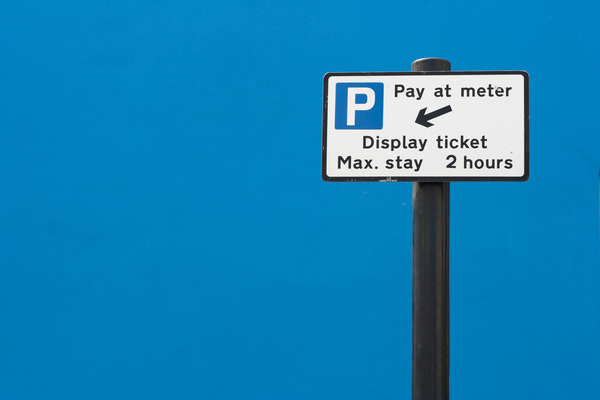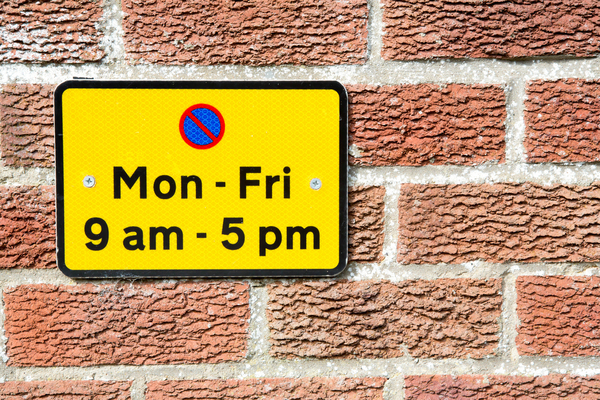
In this article:
- Choosing a parking spot
- On-street parking
- Off-street parking
- Parking and The Highway Code
- Is waiting the same as parking? What about stopping?
Choosing a parking spot
When you arrive at your destination, it’s time to choose the ideal spot to park. This isn’t always as obvious as it might seem, as there are quite a few things to bear in mind.Where can I park?
Before choosing a place in which to park, make sure it’s safe and legal to park there. You can usually tell if it’s legal to park there via road signs and markings . But parking restrictions may limit your options, especially in town and city centres. Try and get into the habit of asking "is there parking?" before you leave if other people are more familiar with an area than you are.
How do I choose a parking spot?
There are a few factors to consider when picking a parking space. First and foremost, ask yourself whether you can get into - and out of - the space comfortably and safely. When you are a new driver you might not get an instant feel for the size of your car, but this will come in time.
Choose a nice, clear spot with plenty of room. For instance, when parallel parking, try to leave at least two feet (60cm) of space between you and other vehicles.
This should give both you and them enough clearance when one of you leaves. It’s a good idea to pick your neighbours well when choosing a spot. Take visibility into consideration. Parking close to a van, for example, could mean your view is restricted when trying to leave the space. As a matter of courtesy, leave plenty of room for other road users to do what they need to do.
Vehicles used for loading need more space and getting too close risks getting your car scuffed. Likewise, leave plenty of room for vehicles carrying disabled passengers or drivers. Car parks and roadside parking often have disabled bays in convenient positions, so avoid parking in these unless you’re a registered Blue Badge holder.
You should also avoid parking in designated parent and child spaces unless you’re with a child or children under the age of 12.
| Back to top |
On-street parking
What does off-street parking mean?
The meaning of on-street parking is - quite simply - parking at the side of the road. These kinds of spaces are often provided on the street in towns, cities and residential areas. Parking spaces may well be signposted by a sign with a white ‘P’ on a blue background.
Specific rules for on-street parking bays are usually displayed on nearby signs, with the blue ‘P’ sign in the corner. These may state that there are time limits imposed on parking, or that the spaces can only be used by certain vehicles, for example.
How do you park a car on the street?
One of the most common methods of parking on the street is parallel parking. This is why it’s a driving-test staple, and a good skill to master.
Other types of on-street parking include angled parking bays - usually at a 30°, 45° or 60° angle. This will usually mean having to reverse out - but the angle of the bay is helpful in terms of visibility.
Some streets may have parking bays at right-angles to the kerb. This is where your bay parking skills will be put to the test.
How far from the kerb should I park?
Best practice is usually to park as tightly to the kerb as possible. This causes less of an obstruction, and reduces the risk to traffic when you open doors into the road.
You should aim to get within 30cm (12”) of the kerb, at least. Any more could constitute an offence. On your driving test, you should aim to get much closer than this, or it might constitute a major fault. Read our practical driving test guide for more helpful information.
Can I park near a junction?
Rule 243 of The Highway Code warns against parking opposite or within 10 metres of a junction. An exception is made if there’s an authorised parking space.
This doesn’t mean that it’s a motoring offence to park on or near a junction. However, it’s best practice to avoid doing so, as you could be causing an obstruction, or reducing other road users’ visibility.
Can I park in a residential street?
When parking on a residential street, check to see whether you’re allowed first. If bays are marked, there’s a good chance there’ll be restrictions of some sort. Nearby signs will tell you what kind of rules are in place. There may be a resident parking permit system, for instance, or parking may be limited to specific durations or certain times of day.
If there are no markings or restrictions in place, you should still exercise some caution in choosing a spot. Don’t park by a dropped kerb, for example, as these are used for access. Getting caught parking next to one could land you with a ticket.
Where there’s unrestricted parking, it’s OK to park outside someone’s house. Be sure that you’re not blocking a driveway or any other means of access though. Typically driveways will also have dropped kerbs, but always check to make sure you’re not blocking anyone’s path.
What are the disadvantages of on-street parking?
There are a few more on-street parking problems worth being aware of. For example, unmaintained road markings may mean it’s unclear whether you can park in certain places or not.
Where space is limited, you may have to parallel park in a tight spot. Be mindful of access to the boot - both for you and others. If you’re parking by a vehicle that requires mobility access, make sure they have extra space.
Also, if you park somewhere with no attendants or CCTV, your car may be more prone to theft, vandalism or accidental damage. For this reason, it’s best not to leave possessions on display in your vehicle, park in poorly lit areas at night, or to park near particularly fast-moving traffic.
| Back to top |
Off-street parking
What does off-street parking mean?
This is parking which is provided away from the street itself. Types of off-street parking include paid car parks provided by the council, or privately owned spaces such as NCP multi-storey car parks.
Read our guide to mastering bay parking here.
The most obvious advantage of off-street parking is that it frequently allows you to park within town or city centres, where there may be little or no on-street parking available.
How does off-street parking work?
Unless subsidised parking is provided by companies for their employees, or large shops for their customers, off-street parking is usually paid for.
This frequently takes the form of pay-and-display ticketing. This is where you pay for a space over a chosen length of time. You’re issued a ticket, which you display somewhere clearly visible - such as in your windscreen.
Other car parks may issue a ticket that you keep on you. When it’s time to leave, you pop it into a machine and pay for the amount of time you’ve used. There will be barriers on your exit which only let you through if you’ve paid.
Increasingly, it’s possible to pay for parking on your phone or via an app. Such systems tend to rely on number-plate recognition.
What are the disadvantages of off-street parking?
Paying for off-street parking can be expensive - especially private car parks in city centres. And this can add up if you need to use them frequently. You might find you’re better off parking further out of town, and travelling the last leg via public transport.
Many cities operate park & ride schemes with parking on the outskirts of town. This helps relieve congestion in city centres, and is usually cheaper than parking in the centre.
Also, it’s worth noting that off-street parking regulations may differ from how you might expect, especially in private car parks. For example, Blue Badge holders may not be entitled to the same benefits as with on-street parking. Be sure to check what parking fees apply, and any time restrictions in place.
Parking and The Highway Code
Waiting and parking is covered by rules 238 to 252 of The Highway Code.
Rule 239 advises that it’s best to use off-street parking or parking bays with white lines where possible.
It then goes on to address on-street parking rules. If you have to park at the roadside, get as close as you can to the side, and avoid parking against the flow of traffic. It’s a legal requirement to switch off the engine, headlights and fog lights, and apply the handbrake before you leave. It’s also an offence to hit anybody with your door when you open it, so check for cyclists, pedestrians and other traffic.
Rule 240 lists places that you MUST NOT park - the use of ‘MUST NOT’ denoting a legal requirement. This includes - but isn’t limited to - pedestrian crossings, clearways, taxi bays, roads marked with double white lines, and cycle tracks.
Rule 243 goes on to list places you should avoid stopping or parking. These include, but aren’t limited to:
- Near the entrance to a school
- Anywhere which might prevent access for emergency services vehicles
- At or near a taxi rank, bus or tram stop
- On a bend
- Where you’d obstruct the use of cycle facilities for cyclists
An exception is made where you’ve been forced to stop by stationary traffic.
To see all the rules in detail, you can read rules 238 to 252 of The Highway Code here.
| Back to top |
Is waiting the same as parking? What about stopping?
When it comes to stopping, waiting and parking, the lines can sometimes seem a little blurred. Taking a literal approach is the best way to differentiate them.
If a sign says ‘no stopping’, that means keep moving - unless you’re forced to stop by stationary vehicles. You shouldn’t stop on a pedestrian crossing (including the area marked by zig-zags) or cycle tracks, for instance.
‘No waiting’ means it’s ok to stop briefly, but don’t linger for too long. For example, it’s OK to pick up or drop off passengers in urban clearways. The same applies to roads marked with double white lines, where you can also load or unload goods.
‘No parking’ means you can’t park there for any length of time. It doesn’t make a difference if you get out of the car or not. If you’re in any doubt, it’s always best to err on the side of caution.
| Back to top |

